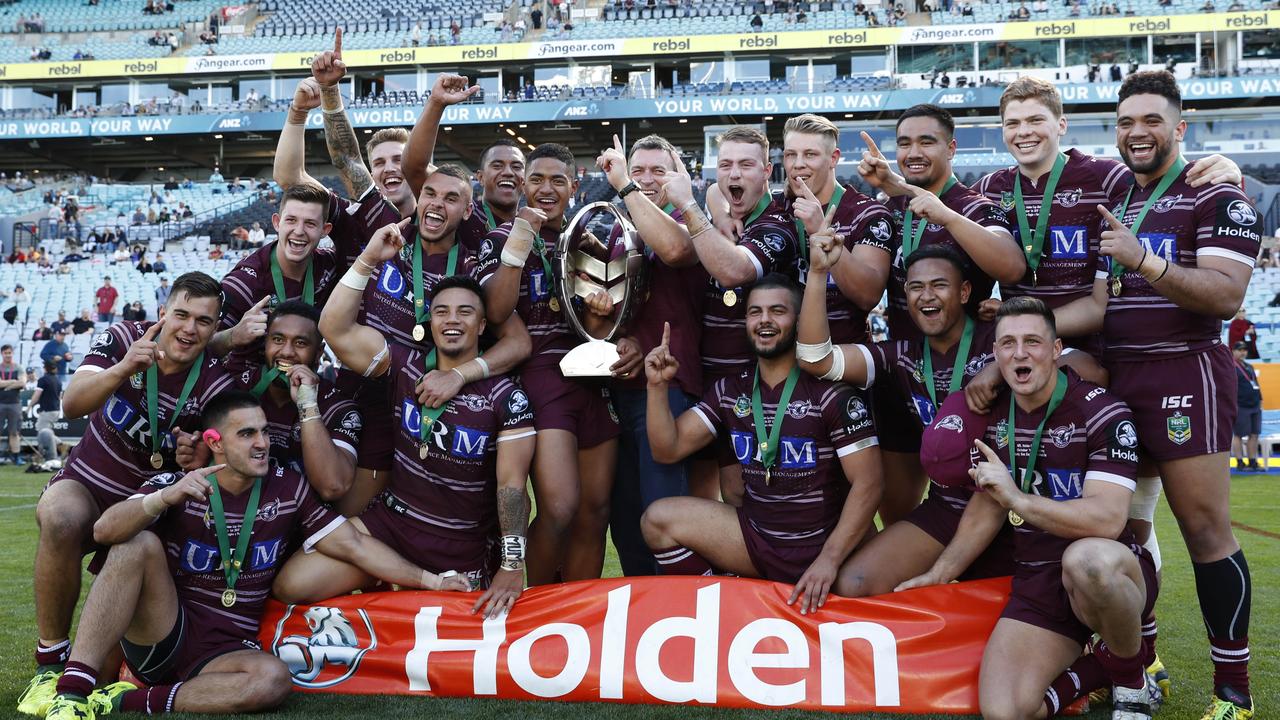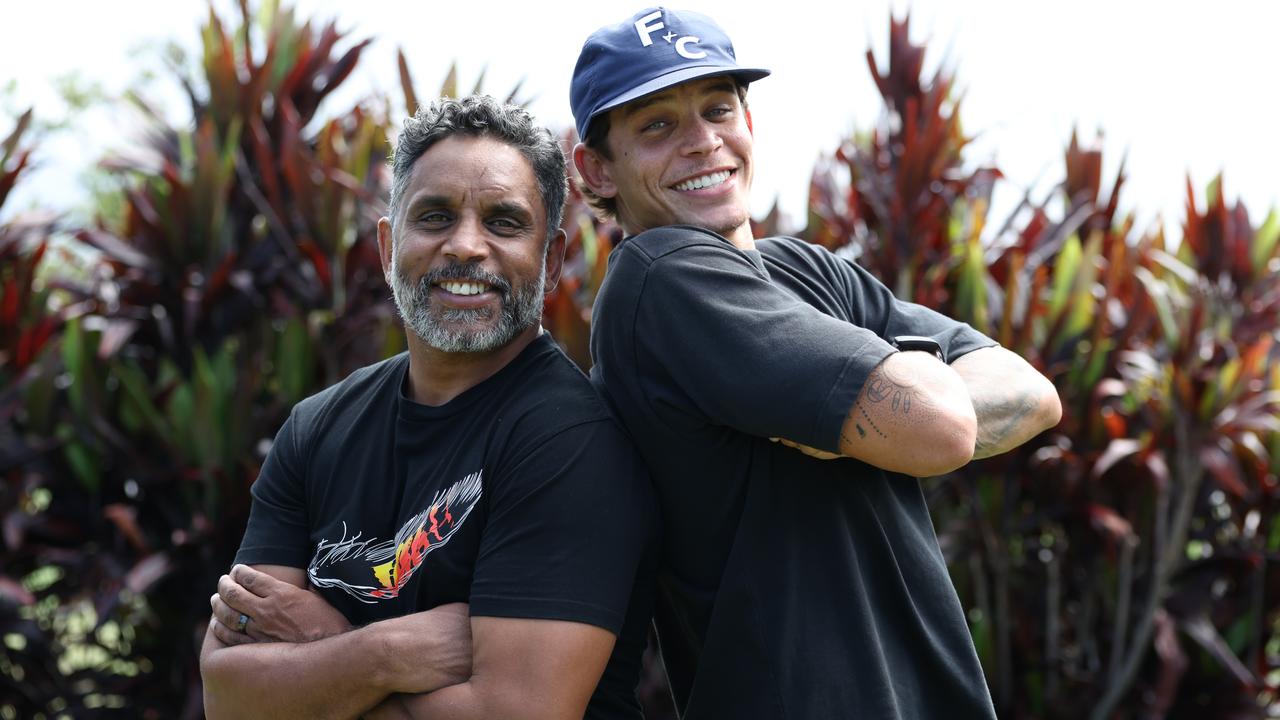Broncos v Storm: The NRL finals clash for the ages
FLASHBACK: When it comes to sheer drama and impact that rippled through both clubs for seasons to come, this Broncos v Storm showdown can’t be beaten.
BRISBANE and Melbourne are as closely linked as two teams at opposite ends of the Australian rugby league map can be.
The Storm will play the Broncos for the 43rd time on Friday night — that’s more times than they’ve played against any other club — and seven of those matches have come in the finals.
One of these games was back in 1998, during the Storm’s infancy, and a red-hot Brisbane side disposed of the overachieving Storm 30-6.
The other six games have all come in the Craig Bellamy era and the Storm have won five of them, their sole loss coming in the 2006 grand final.
That grand final was Brisbane’s last premiership, the first all-interstate decider and while it may not have been the Broncos’ most memorable grand final victory it might be their best, because 2006 was the year the Storm became Melbourne Storm featuring The Big Three, even though we didn’t know how big that big three would end up becoming.
But when it comes to sheer drama and impact that rippled through both clubs for seasons to come, the 2008 semi-final can’t be beaten. It’s one of the best five games of the NRL era, and perhaps the most dramatic victory in Storm history outside of the 1999 grand final.
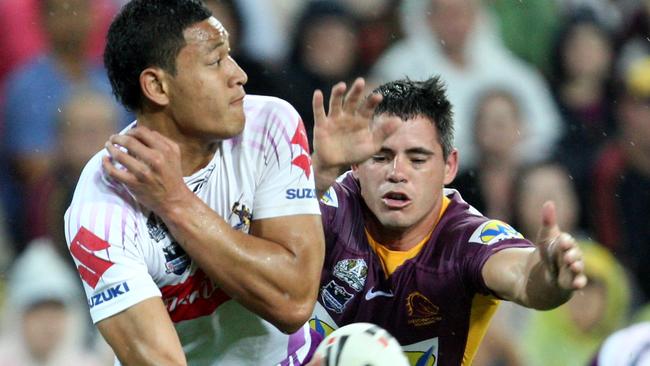
The 2008 Broncos were one of the club’s more unusual teams. For starters, the great Darren Lockyer missed a lot of the season and when we say a lot we mean he only started 14 games. Niggling injuries kept him out of the entire State of Origin series and come Round 18 he’d only played six games, three of which were off the bench.
But Wayne Bennett, as the great coaches do, found a way around the problem. Peter Wallace, in his first year with the club, emerged as one of the better halves in the competition and Karmichael Hunt took over as the club’s main playmaker from fullback.
It was the best year of Hunt’s career — a five-year veteran at 21, Hunt showed some dazzling ball-playing skills as Bennett’s Broncos employed and began to perfect the second-man sweep play that has become used by every team in the country.
David Stagg was the regular replacement at five-eighth when Lockyer went down because David Stagg is proof that with a can-do attitude and a desire to make a heap of tackles you can get by in just about any position on the field. Hooker Michael Ennis rounded out the spine.
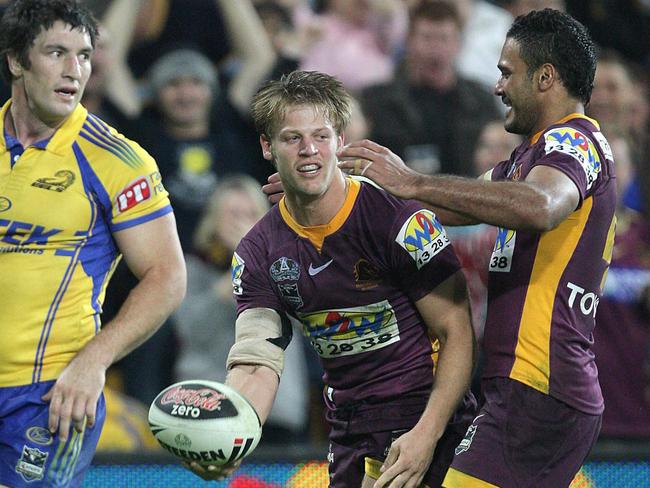
Darius Boyd moved all around the backline but finally settled on one wing while the other flanker was Denan Kemp, a true one-season wonder who scored 19 tries in 24 matches.
In each of his other three seasons in the NRL, Kemp never crossed for more than one-four pointer.
Justin Hodges was there when he was fit, which was never a guarantee as knee problems ravaged his season.
The forward pack could carry Brisbane through just about anything. Ben Hannant, Greg Eastwood, Joel Clinton and the forever underrated Nick Kenny were the middles, along with Ashton Sims, who had a fine season that ended in the worst way possible.
The all-star backrow was something to behold — Corey Parker on one edge, Tonie Carroll at lock and Sam Thaiday on the other side. It was a career year for Thaiday, who finished in the top 10 in Dally M voting for the season.
What made the season all the stranger for the Broncos was Wayne Bennett’s impending departure. The super coach’s relationship with the club had soured, and once things wound up for Brisbane he was bound for St George Illawarra. He returned years later, as we all know, but it was a situation that was odd to begin with and never got any easier to process. Bennett had been with the club for 20 years, for anyone else to coach the Broncos or for Bennett himself to coach anybody else, it just didn’t feel right back then.
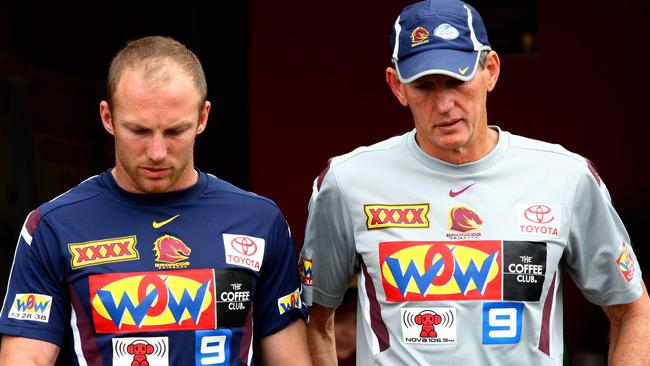
But that never filtered through to the performance of the team. The Broncos didn’t drop outside of the top eight all season and had three tough wins to end the regular season. Lockyer returned and was in great form because of course he did and while Melbourne and Manly were the prohibitive title favourites and dominated much of the regular seasons, Brisbane were lurking in the shadows, ready to pounce if either of them slipped for a moment.
Cronulla and the Roosters pipped them on the ladder, but the Broncos fancied their chances of another title. Wayne Bennett admitted in his autobiography that he felt as though they were a championship-calibre team.
Melbourne were fresh off the 2007 premiership, which was as dominant a title as we’ve seen in the NRL era, but couldn’t repeat the level of control. Cooper Cronk missed a couple of games to start the season, Craig Bellamy coached the Blues and the club had a record Origin representation with 10 players taking part in the series. It ripped the middle of the club’s year apart but they righted the ship and won five of their last six to secure a third straight minor premiership.
Billy Slater was at the back, Cameron Smith in the middle and Cronk at the scrumbase, as ever, but the rest of the Melbourne squad was in something of a transition.
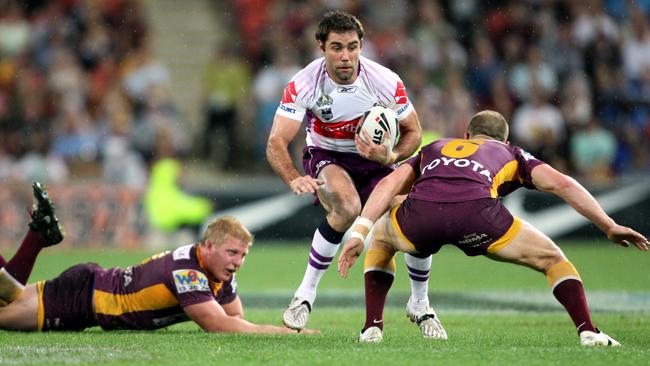
There were still some players who had debuted when Bellamy first came to the club in 2003, players like Ryan Hoffman, Dallas Johnson and Jeremy Smith, but the club was slowly being filled by players who had been fully raised and developed by Bellamy himself, like Adam Blair, Brett White, Sika Manu, Antonio Kaufusi, Will Chambers and Anthony Quinn.
And, of course, for the last time, they had Greg Inglis and Israel Folau.
Inglis played five-eighth for the second season in a row because the club was so overflowing with riches it was the only place they could fit him. And this wasn’t the Greg Inglis we know now, the powerful, bruising runner who left a trail of destruction in his wake, this was young Greg Inglis. Young Greg Inglis wasn’t as strong or as clever a footballer but he was quicker, much quicker, so quick it felt like nobody could ever catch him and he still had that piston off a fend. He ran like he was flowing water, everything moved together the way it was supposed to with impossible grace and balance.
Folau was signed and sealed to leave for Brisbane at the end of the year but he was phenomenal. After his pulverising rookie season in 2007 (21 tries in 27 games at 18 and becoming the youngest Kangaroo in history) he managed 15 tries in 25 games, made his Queensland Origin debut and did amazing things every week. He wasn’t even 20 yet.
Melbourne finished top of the heap and took on the eighth-placed Warriors at the old Olympic Park in week one of the finals. They called it “The Graveyard” because if you went down there you got buried. The Storm were undefeated at the rickety old venue in 2007 and had only lost there once in 2008, not that the Warriros cared.
On the back of a late try to Michael Witt where he famously danced around the in-goal for no real reason, the Warriors won 18-15 in the biggest finals upset of the decade. Eighth beat first for the first time ever, up was down, black was white and Melbourne were facing the unthinkable, a straight-sets finals exit.
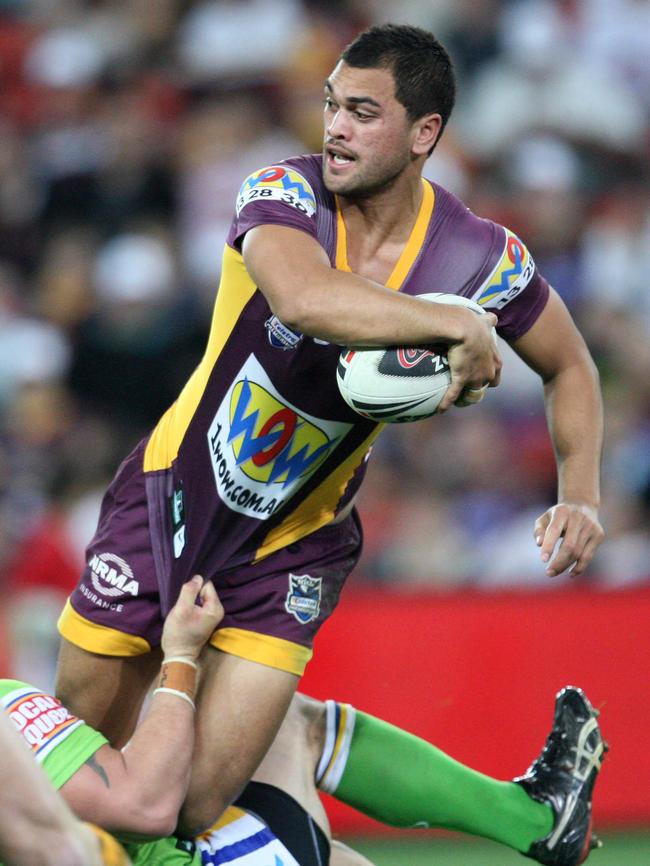
Brisbane were far more impressive in week one — they travelled to the Sydney Football Stadium and got into an old-fashioned slug fest with the Roosters. In a highly-physical encounter that is one of the forgotten gems in finals footy, Brisbane put together a clinical second half to win 24-16 and thus were rewarded with home-ground advantage in week two.
In front of over 50,000 fans who would have bled XXXX if you cut them open, Brisbane struck first with a beautiful right-to-left backline spread that ended with a Hunt pass to Boyd that was pretty as a picture. A pre-silver fox Parker smacked it over from touch to give the Broncos the dream start.
Melbourne had the better of the field position and the possession, but Brisbane absorbed the shots and counterpunched through Kemp.
The try was a measure of the skill Brisbane possessed across the park, as the ball swept from left to right and back to the middle, with Lockyer involved twice before Kemp scampered through to open up a 12-point lead the Broncos carried to halftime.
Just after halftime Melbourne, who had struggled to put their attack together all night, struck out of nowhere. Folau had an inch of space, stepped poor Joel Moon out of his boots and offloaded to Michael Crocker. Crocker, the Storm’s good luck charm, victorious in 38 of the 41 games he’d played with the club to that point, raced over to score.
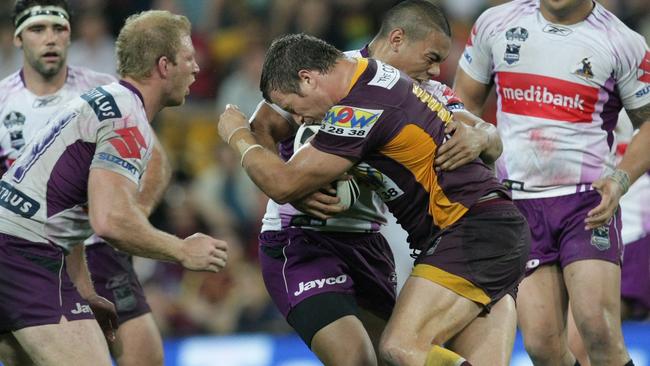
Inglis had a try disallowed not long after that and it’s up there with the greatest tries never scored. A Smith grubber that flirted with the deadball line was batted back not once, but twice — first by Matt Geyer, then by Anthony Quinn — and Inglis pounced on the loose ball. It would have been the equal of the try Inglis created for Mark Gasnier in the Centenery Test only months before, had Inglis himself not been off-side from the initial Smith kick.
From there, it was a tight match, as tight as a match can be. The star power on show was absurd — of the 34 players, 30 played either State of Origin or Test football. All 17 Melbourne players played rep footy. You’d be hard pressed to find another match dripping with so many big names.
The pressure of the situation became enormous and it proved too much for Melbourne’s Jeff Lima, who was sin-binned for a late shot on Michael Ennis after a period of niggling play from both sides. Brisbane kicked a penalty to open up an eight-point lead, which Melbourne closed to two when Slater leapt high to claim a Cronk kick.
The final five minutes were upon the Storm and they started to self-destruct. Cameron Smith put a drop out over the sideline on the full, while Matt Geyer made a careless error deep in his own half.
They were there to be beaten and when Ben Hannant plunged over the line with three to go, Brisbane thought they’d done it. Even Wayne Bennett celebrated. It took a sublime save from Slater to prevent Hannant from grounding the ball and keep the Storm alive, and they surged downfield fuelled by desperation. Things looked likely for a second, but Slater knocked on and Brisbane, again, felt like they were home. Two minutes left, one set each, Brisbane ahead 14-12.
But Brisbane never finished that set. On the third tackle, Ashton Sims trucked it over the 20-metre line. Sika Manu flew in like a missile, hit Sims right under the ball, just like you’re supposed to, and jolted the footy free. It was a cruel fate for Sims, who had been an honest performer during his time at the Broncos, and an error for which many Brisbane fans never forgave him.
The exhausted Broncos never really reformed their defensive line and two tackles later Melbourne spread it left. There was no fancy passing or bodies in motion, it was just a simple catch and pass from flat-footed, exhausted players and Geyer made the key play, drawing Kemp for Inglis to amble over in the exact spot his earlier try had been denied. Fifty seconds left and Melbourne had them blind.
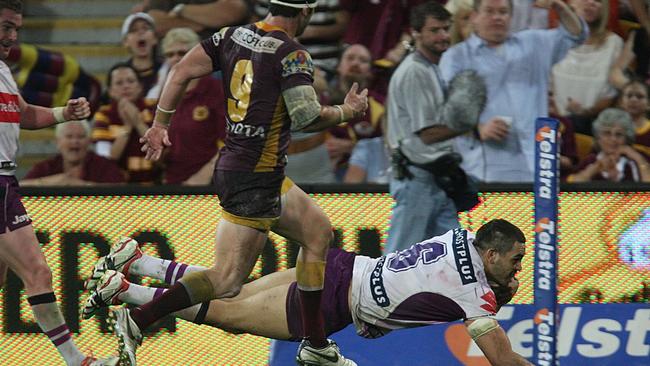
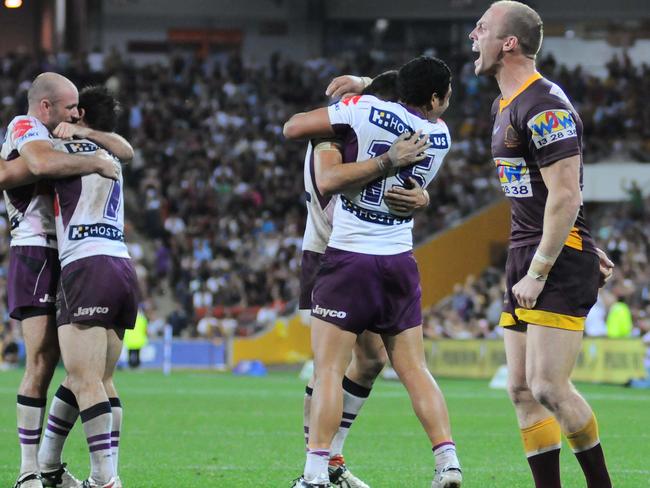
The Broncos fell to the ground in fatigue and agony. Melbourne’s coaches box exploded in sound and fury. Smith’s pointless, missed conversion took place with Brisbane players strewn about the field in disbelief.
Lockyer, always implacable, calm, composed, measured, let out a guttural scream to the heavens and sunk to his knees. Ben Ikin interviewed the Broncos captain after the match and Lockyer could barely speak.
It was a raw, emotional moment, the worst way for the Bennett era to end, even though it one day began again. Except for perhaps the 2015 grand final, no defeat could be bleaker.
It was a Pyrrhic victory for the Storm. Smith was suspended for two matches due to a grapple tackle on Sam Thaiday in the second half and while the Storm didn’t need him to thrash an overmatched Cronulla outfit 28-0 in the prelim, there was no mercy from Manly in the grand final. The Sea Eagles overran the exhausted Storm 40-0, the biggest win in grand final history. It had all become too much and the ravages of a long, difficult season sucked all the fight out of them.
The Storm romped to another title in 2009 before it all proved too good to be true and vanished from history due to their salary cap breaches.
Brisbane lost their way without Bennett despite qualifying for preliminary finals in 2009 and 2011. It wasn’t until he came back in 2015 that they had another real go at a title, which was ripped away from them in a fashion every bit as cruel as this match.
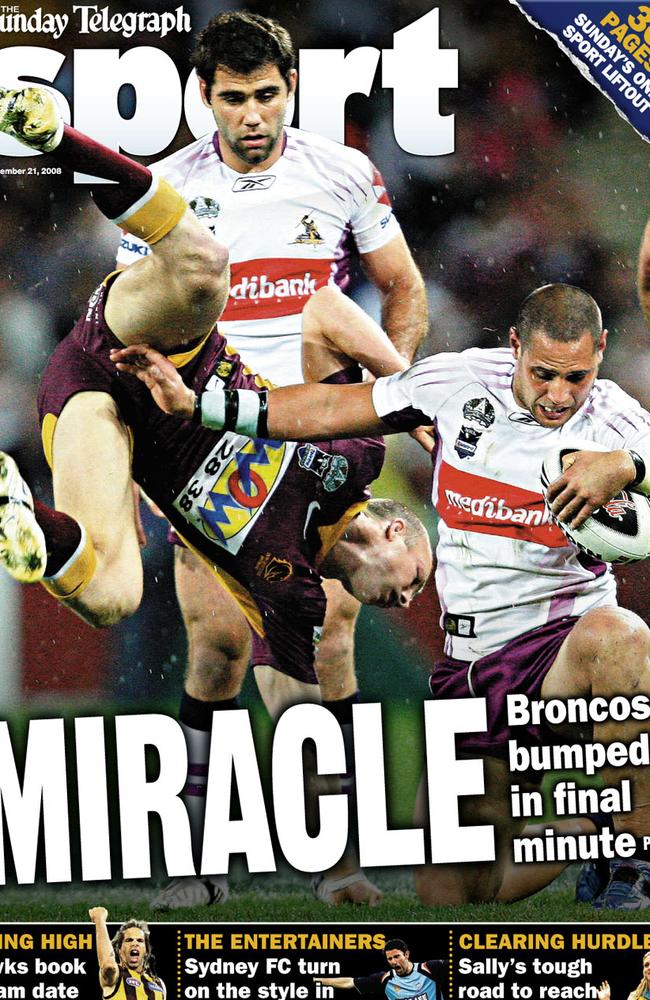
Originally published as Broncos v Storm: The NRL finals clash for the ages

